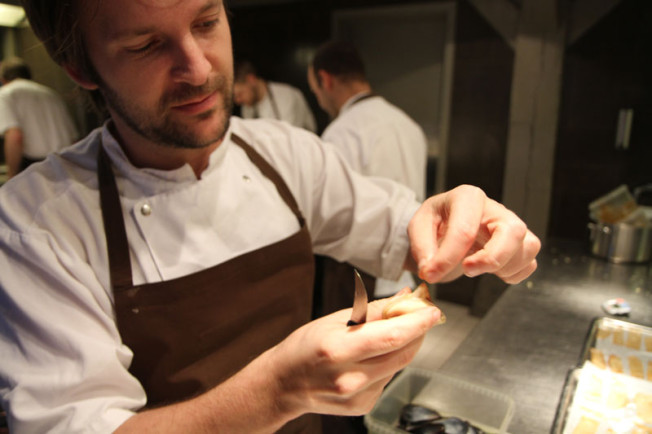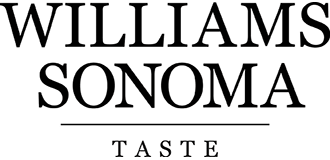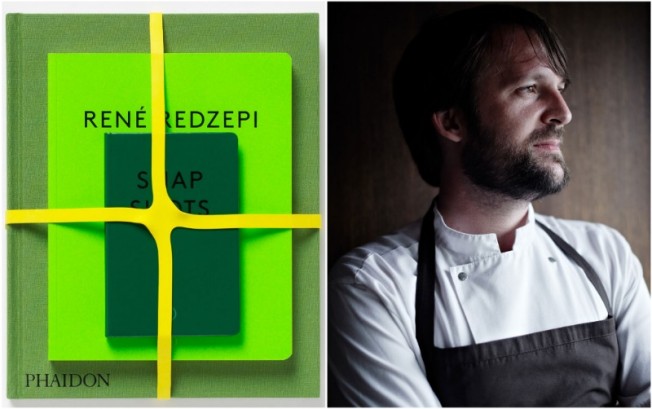What happens after you reach the top? That’s what Rene Redzepi, Chef at Copenhagen’s two Michelin star Noma, asked himself after Noma was ranked the Best Restaurant in the World — in 2010, 2011 and 2012. Suddenly, there was so much at stake; he feared losing the title, and his team’s creativity suffered. To bring innovation and excitement back to his kitchen, he decided to keep a journal for a year, exploring exactly what makes an inspiring work environment.
The result is Work in Progress — part cookbook, part journal, and part photo album, a unique insight into the life and mind of a chef. We were thrilled to have Rene in our very own test kitchen this week, where he read excerpts from the journal and spoke about the challenges and rewards of running a top restaurant. We were so inspired by what he had to say that we followed up for an exclusive interview to share on Taste. Read on, and enjoy!
You’ve structured this book in 3 parts: recipes, photos, and a journal. Why? What did you hope to achieve with the last two components by going beyond just recipes?
The journal was never meant to be a published book. I just thought of writing a journal for myself to explore creativity and to see how to make a restaurant a better place. In the process of writing, I started noticing what makes good days good and bad days bad, which changed my decision-making quite a bit.
When my publisher read a few journal entries, she said, “This is a book.” It was the book designer who said it had to be divided into three parts. Then, you’d be able to take the recipe book with you to the kitchen, and the other one you could bring to the bedroom with you and read before you fall asleep. They’re separate things, but at the same time, they find family with each other.
Tell us about the photo books. What was your process for taking photos?
They aren’t professional photos; they were taken from my iPhone and from cameras. The recipe book is so perfect — a lot of this stuff looks almost like paintings. So for the snapshots, I asked people in the kitchen to upload their photos, too, to give more of a raw expression of the restaurant.
Why “Work in Progress?” What sort of evolution is going on at Noma – and in your professional life – today?
When I started writing the journal, people told me my work was done: “You’ve reached number one, there’s no more to achieve, that’s the end goal.” They said I didn’t need to push anymore. Writing the journal, I discovered that it’s not about the end result; it’s about the process. That’s where the interesting stuff happens. Reaching the never-attainable goal is what’s fun.
In the journals, you talk about the pressures of running the Best Restaurant in the World. Can you describe how you were feeling?
To tell you the truth, we’d always been fooling around as much as we could and really trusting our gut instincts. Then, suddenly, we had this unbelievable success to protect. I wasn’t really afraid of it until we actually got that accolade. People said, “Watch out — your whole life is set. Don’t lose it.” We had always been quite wild, but we became less wild and less fun. When you have less fun at a 90-hour work week on minimum wage, it becomes stale and you stop enjoying it.
Was it challenging keeping a journal for a year?
I hated every moment of it. It was a good exercise, but coming home at night after going to work and disciplining yourself constantly, you just want a beer and to go to sleep. I had to sit down in front of a screen and wait for the words to come out. It was painful and difficult. Also, I was used to working in teams, and suddenly I was working by myself, with nobody to ask for help. It was a bit of a lonely exercise. I have a newfound respect for people who do that.
Did you feel differently about it after you realized the public would be reading it?
No. I was totally cool with that. I felt good about it. People said, “Rene, you don’t always come across as a swell guy.” And that’s the reality: there are bad days and good days.
What do you hope people take away from the journals?
I think it’s a good read, and it gives insight into what’s going on in a kitchen like ours right now. Other people are going to go through this. It also talks a little bit about how to lead; no one ever taught me how to do that. It deals with how you approach that creative act.
In the beginning of the journal, you write that you hope at the end of the year you’ll understand how creativity works at Noma and among your team. Do you?
Yeah. It’s become much easier to be Noma after the journal. In reading it, you understand a lot of things, and when I went back and re-read it, I saw a general thread of how things worked. It helped quite a bit. It was a very good year — we made more than 100 new dishes.

In your year-long quest for creativity, which discoveries were you most excited about?
It was a funny moment when we discovered insects: ants and crickets. They are a small component of our cuisine, but they added a bit of fun and new flavors.
How are the recipes in Work in Progress different from your first book, Noma?
The first one was very difficult to cook from. This one is not easy — it won’t be your substitute for Wednesday night bolognese. But what happened in writing the journal was that it fueled us with more confidence, and with more confidence, you cook simpler. A lot of the recipes are surprisingly simple, though you are going to be challenged to go out and find great ingredients.
For you, what is a successful recipe or dish?
People loving it! That’s the biggest accolade; it’s what we all hope for. In the end, that’s what we all do it for: to see a smile on guests’ faces. It sounds quite simple but it’s difficult to do.
With all the demands you face, how do you stay inspired and motivated?
Now, we’ve loosened the reins and relaxed the kitchen a bit more. We changed the opening hours and started working more in teams, as opposed to me making all the final critical decisions. One of the biggest inspirations for me is letting the people inspire you. A lot of it is just about that: assembling the right group of people to fuel playfulness and spirit. You implement lots of hard work, and then it’s going to happen.
What inspires you about living and working in Copenhagen?
It’s an enormously big region where few people live. There’s an abundance of agriculture, land, nature and wildlife that’s amazing to be a part of. You step outside on your bike and 10 minutes later you’re picking wild ramps. I love that. Plus, it’s fun to be part of something that’s sprouting.
What are you experimenting with at Noma right now? Any special projects?
Our fermentation project is this ongoing, huge monster. It seems like a bottomless pit. We’ve been at it for a decade but really accelerated this year. It’s going to be the defining flavor and buzzword for the next decade in cooking.
You’re part of a close-knit community of chefs. How do you work together, feed off of one another and learn from one another?
It’s one of the key factors of our time for restaurants: a total newfound sharing of ideas and knowledge across continents. I’ve done it with people my age, like Daniel Patterson and David Chang. What’s happening in David Chang’s kitchen with fermentation is the same as what’s happening in our kitchen. There’s no competition; we do teach each other everything we know.
What are you having for dinner tonight?
I don’t even know yet. We’re working so much and I’m going to go sign books, which can take hours. I might just have a piece of fruit!
OK, in a perfect world, what would you be having tonight?
I’d like to stop at the best taco truck in town and fill myself with tacos.


1 comment
[…] You’ve structured this book in 3 parts: recipes, photos, and a journal. Why? What did you hope to achieve with the last two components by going beyond just Read The Full Story […]